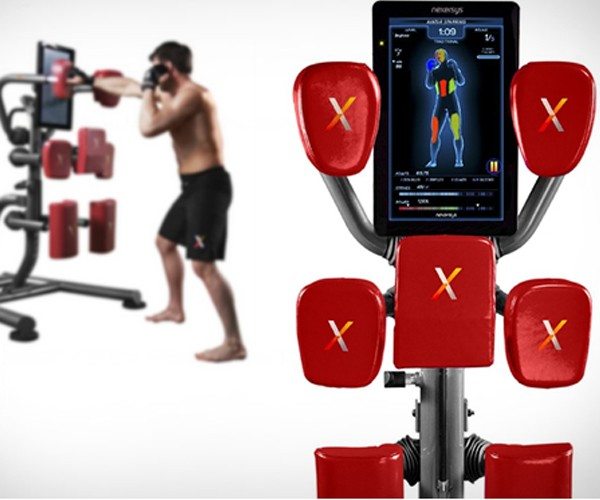- Usb Cd Player For Mac
- Usb Cd Burner For Mac
- Usb Cd Player For Macbook Pro
- Cd Usb For Mac Installer
- Usb Cd Drive For Macbook
- Usb Cd Drive For Macbook Air
- Cd Usb For Mac Download
USB 3.0 External CD DVD Drive with Protective Storage Carrying Case Bag, Portable CD DVD +/-RW Drive Burner for Windows 10/8 / 7 Laptop Computer MacBook Pro Air Mac OS (Dark Gray). Apple - USB-C-to-USB Adapter - White. 'This device allows USB.
Rioddas External CD Drive, USB 3.0 Portable CD/DVD +/-RW Drive Slim DVD/CD ROM Rewriter Burner Compatible with Laptop Desktop PC Windows Linux OS Apple Mac(Black) 4.4 out of 5 stars 11,128 $22.99 $ 22. 99 $24.99 $24.99. Create Bootable USB for Mac on Windows 10, Mac and Windows file system is completely different, so you are not able to create bootable USB for Mac with PowerShell, CMD or Rufus.If you remembered, till MacOS sierra the Apple file system was Hackintosh, but MacOS 10.13 High Sierra has the technology of Apple Filesystem. That’s why we can’t create bootable USB with Windows tools.
Sharing discs
If your Mac doesn't have a built-in optical drive and you need to use a CD or DVD, you can connect an external drive like the Apple USB SuperDrive. You can also share discs from the optical drive of another Mac, or from a Windows computer that has DVD or CD Sharing Setup installed. DVD or CD sharing allows you to access documents stored on these discs, and allows you to install some software.

DVD or CD sharing isn't designed for some kinds of optical media. Connect a compatible optical drive directly to your Mac if you need to use one of these discs:
Usb Cd Player For Mac
- Audio CDs
- Blu-ray or DVD movies
- Copy protected discs (such as some game discs)
- Recordable CDs or DVDs that you want to burn or erase
- Microsoft Windows installation discs
If you have a Microsoft Windows install disc that you want to use with Boot Camp, you can create a disc image of this disc and copy it to a USB flash drive for installation instead.
Setting up a Mac to share discs
To share discs from a Mac that has a built-in or external optical drive, use these steps:
- On the Mac that has an optical drive, choose System Preferences from the Apple menu.
- Click the Sharing icon in the System Preferences window.
- Make sure you've entered a name that you can easily recognize in the Computer Name field.
- Enable the checkbox for DVD or CD Sharing.
- You can also restrict who has access to your optical drive by selecting 'Ask me before allowing others to use my DVD drive.'
Setting up a Windows PC to share discs
To share discs from a Windows PC that has a built-in or external optical drive, use these steps:
- Download and install DVD or CD Sharing Update 1.0 for Windows.
- From Control Panel, open 'Hardware and Sound'
- Click 'DVD or CD Sharing Options.'
- Select the checkbox for DVD or CD Sharing.
- You can also restrict who has access to your optical drive by selecting 'Ask me before allowing others to use my DVD drive.'
If you're sharing discs from a Windows computer and your PC has firewall software enabled, be sure to allow access to the following programs from your firewall:
- ODSAgent
- RemoteInstallMacOSX
Use a shared DVD or CD
After you've enabled DVD or CD Sharing, you can use that computer's optical drive at any time. Insert a disc in the optical drive of the computer that's being shared. The disc should then be available on any Mac that's connected to the same network.
- On the Mac that doesn't have an optical drive, open a Finder window.
- Select Remote Disc in the Devices section of the sidebar. You should see the computer that has DVD or CD Sharing enabled.
- Double-click the computer's icon, then click Connect to see the contents of the CD or DVD available from that computer.
If you can't use a shared disc
If your Mac already has a built-in optical drive, or an external optical drive connected, you won't see the Remote Disc feature appear in the Finder or other apps.
If you're using a compatible disc and you don't see it from Remote Disc, make sure the sharing computer is turned on, is connected to the same network as your Mac, and has a compatible CD or DVD in its optical drive. If you've enabled the option to ask for permission before using the drive, click Accept on the computer that is sharing its optical drive.
These advanced steps are primarily for system administrators and others who are familiar with the command line. You don't need a bootable installer to upgrade macOS or reinstall macOS, but it can be useful when you want to install on multiple computers without downloading the installer each time.
Download macOS
Find the appropriate download link in the upgrade instructions for each macOS version:
macOS Catalina, macOS Mojave, ormacOS High Sierra
Installers for each of these macOS versions download directly to your Applications folder as an app named Install macOS Catalina, Install macOS Mojave, or Install macOS High Sierra. If the installer opens after downloading, quit it without continuing installation. Important: To get the correct installer, download from a Mac that is using macOS Sierra 10.12.5 or later, or El Capitan 10.11.6. Enterprise administrators, please download from Apple, not a locally hosted software-update server.
OS X El Capitan
El Capitan downloads as a disk image. On a Mac that is compatible with El Capitan, open the disk image and run the installer within, named InstallMacOSX.pkg. It installs an app named Install OS X El Capitan into your Applications folder. You will create the bootable installer from this app, not from the disk image or .pkg installer.
Use the 'createinstallmedia' command in Terminal
- Connect the USB flash drive or other volume that you're using for the bootable installer. Make sure that it has at least 12GB of available storage and is formatted as Mac OS Extended.
- Open Terminal, which is in the Utilities folder of your Applications folder.
- Type or paste one of the following commands in Terminal. These assume that the installer is still in your Applications folder, and MyVolume is the name of the USB flash drive or other volume you're using. If it has a different name, replace
MyVolumein these commands with the name of your volume.
Catalina:*
Mojave:*
High Sierra:*
El Capitan: - Press Return after typing the command.
- When prompted, type your administrator password and press Return again. Terminal doesn't show any characters as you type your password.
- When prompted, type
Yto confirm that you want to erase the volume, then press Return. Terminal shows the progress as the bootable installer is created. - When Terminal says that it's done, the volume will have the same name as the installer you downloaded, such as Install macOS Catalina. You can now quit Terminal and eject the volume.
* If your Mac is using macOS Sierra or earlier, include the --applicationpath argument, similar to the way this argument is used in the command for El Capitan.
Usb Cd Burner For Mac
Use the bootable installer
After creating the bootable installer, follow these steps to use it:
Usb Cd Player For Macbook Pro
- Plug the bootable installer into a compatible Mac.
- Use Startup Manager or Startup Disk preferences to select the bootable installer as the startup disk, then start up from it. Your Mac will start up to macOS Recovery.
Learn about selecting a startup disk, including what to do if your Mac doesn't start up from it. - Choose your language, if prompted.
- A bootable installer doesn't download macOS from the Internet, but it does require the Internet to get information specific to your Mac model, such as firmware updates. If you need to connect to a Wi-Fi network, use the Wi-Fi menu in the menu bar.
- Select Install macOS (or Install OS X) from the Utilities window, then click Continue and follow the onscreen instructions.
Cd Usb For Mac Installer
Learn more
For more information about the createinstallmedia command and the arguments that you can use with it, make sure that the macOS installer is in your Applications folder, then enter this path in Terminal:
Catalina:
Usb Cd Drive For Macbook
Mojave:
Usb Cd Drive For Macbook Air

High Sierra:
Cd Usb For Mac Download
El Capitan:
